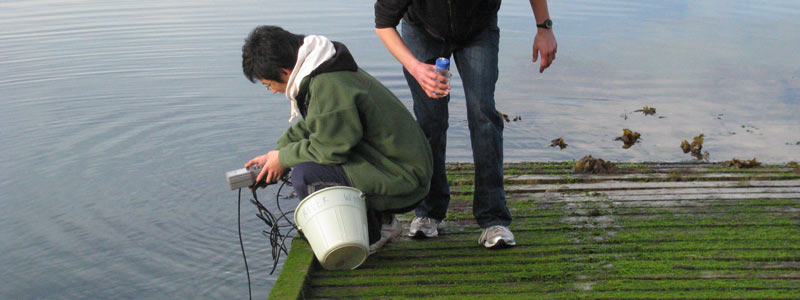
Students use YSI multi-probe meters to collect information about temperature, salinity, and dissolved oxygen in the field. They then corroborate their field readings using titration techniques for salinity and dissolved oxygen1. pH is measured using battery-powered pH meters, which the students calibrate using standard pH buffer solutions.
Concentrations of dissolved reactive phosphorus (DRP) are determined using a colorimetric method involving molybdenum blue, the optical density of which is determined by absorbance at 885 nm, and is proportional to the concentration of DRP in the original sample2.
Concentrations of nitrate/nitrite nitrogen (NNN) are determined by first reducing nitrate to nitrite using a copper-cadmium column. Then the nitrite is then used to form a pink azo dye, which is quantified by optical absorbance at 543 nm and is proportional to the sum of the concentrations of nitrate and nitrite ions present in the original sample3.
Concentrations of chl-a are determined by spectrophotometric analysis of the material filtered from a known volume of sample water and extracted into acetone3.
Enterococci concentrations are determined using a two-step membrane filtration method4. Water samples are filtered and the filter membrane is then introduced to the growth medium. Enterococci colonies are counted after a 48 hour incubation period.
References
- Carpenter, J.H. Limnol. Oceanogr.1965, 10, 141-143.
- Murphy, J.; Riley, J.P. Anal. Chim. Acta 1962, 27, 31-36.
- Parsons, T.R.; Maitra, Y.; Lalli, C.M. A Manual of Chemical and Biological Methods for Seawater Analysis Pergamon: New York 1984.
- Levin, M.A.; Fischer, J.R.; Cabelli, V.J. Appl. Microbiol. 1975, 30, 66–71.
